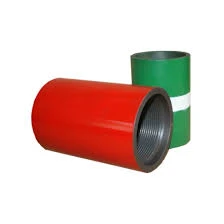- Afrikaans
- Albanian
- Amharic
- Arabic
- Armenian
- Azerbaijani
- Basque
- Belarusian
- Bengali
- Bosnian
- Bulgarian
- Catalan
- Cebuano
- Corsican
- Croatian
- Czech
- Danish
- Dutch
- English
- Esperanto
- Estonian
- Finnish
- French
- Frisian
- Galician
- Georgian
- German
- Greek
- Gujarati
- Haitian Creole
- hausa
- hawaiian
- Hebrew
- Hindi
- Miao
- Hungarian
- Icelandic
- igbo
- Indonesian
- irish
- Italian
- Japanese
- Javanese
- Kannada
- kazakh
- Khmer
- Rwandese
- Korean
- Kurdish
- Kyrgyz
- Lao
- Latin
- Latvian
- Lithuanian
- Luxembourgish
- Macedonian
- Malgashi
- Malay
- Malayalam
- Maltese
- Maori
- Marathi
- Mongolian
- Myanmar
- Nepali
- Norwegian
- Norwegian
- Occitan
- Pashto
- Persian
- Polish
- Portuguese
- Punjabi
- Romanian
- Russian
- Samoan
- Scottish Gaelic
- Serbian
- Sesotho
- Shona
- Sindhi
- Sinhala
- Slovak
- Slovenian
- Somali
- Spanish
- Sundanese
- Swahili
- Swedish
- Tagalog
- Tajik
- Tamil
- Tatar
- Telugu
- Thai
- Turkish
- Turkmen
- Ukrainian
- Urdu
- Uighur
- Uzbek
- Vietnamese
- Welsh
- Bantu
- Yiddish
- Yoruba
- Zulu
what is a bull plug
What is a Bull Plug?
In the world of plumbing and drainage systems, the term bull plug may not be widely recognized outside of professional circles, yet it holds significant importance within various industries. A bull plug is essentially a type of pipe fitting that is used to seal the end of a threaded pipe. It is designed to provide a watertight seal, preventing leakage and ensuring that systems operate efficiently.
Definition and Composition
A bull plug is characterized by its design, which typically includes a solid, cylindrical piece of material that screws into the end of a pipe. The exterior of the bull plug is threaded, allowing it to fit securely into corresponding threaded pipe ends. These fittings can be made from various materials, such as brass, stainless steel, or PVC, depending on the application and the requirements of the system in which they are used. The choice of material is critical, as it determines the durability, corrosion resistance, and overall performance of the plug in different environmental conditions.
Applications
Bull plugs are widely used in plumbing, irrigation systems, and various industrial applications. They are particularly useful in situations where a pipe needs to be temporarily or permanently sealed off. For instance, if a particular section of a pipeline is undergoing maintenance or replacement, bull plugs can be used to cap off the ends and prevent any backflow of water or other substances. This makes them invaluable in maintaining the integrity of the system and ensuring safety.
In addition to plumbing, bull plugs are also utilized in other fields such as construction and manufacturing. They can be used in pneumatic systems, where they help seal off air supply lines, ensuring the system maintains the necessary pressure levels. Moreover, in-water drainage applications, bull plugs can aid in the seasonal shutdown of a drainage system, preventing water from entering and causing damage when not in use.
Installation and Considerations
what is a bull plug

Installing a bull plug is a relatively straightforward procedure, typically requiring only basic tools. However, it is essential to ensure that threads on both the bull plug and the pipe are clean and free from debris before installation. Any dirt or foreign material can compromise the seal and lead to leaks.
When selecting a bull plug, it is also crucial to consider the size and thread type to ensure compatibility with existing pipes. Proper sizing is essential not only for effective sealing but also for maintaining the overall efficiency of the system. Using a bull plug that is too small or too large can result in improper sealing and lead to more significant issues down the line.
Advantages of Using Bull Plugs
One of the primary advantages of using bull plugs is their ability to create a reliable and tight seal, significantly reducing the risk of leaks. This reliability is enhanced when the plugs are made from high-quality materials that are resistant to both corrosion and mechanical stress.
Furthermore, bull plugs are often easier and faster to install compared to other sealing methods, such as welding or soldering. This ease of installation can save time and labor costs, particularly in large-scale projects or repair situations.
Conclusion
In conclusion, the bull plug is a vital component in the realm of plumbing and various industrial applications. Its fundamental role in sealing the ends of pipes ensures the efficiency and safety of fluid transport systems. Understanding the function and proper use of bull plugs can lead to better maintenance practices and improved performance of plumbing installations. Whether in residential or industrial settings, these fittings are indispensable for maintaining the integrity of piping systems.
-
Tubing Pup Joints: Essential Components for Oil and Gas OperationsNewsJul.10,2025
-
Pup Joints: Essential Components for Reliable Drilling OperationsNewsJul.10,2025
-
Pipe Couplings: Connecting Your World EfficientlyNewsJul.10,2025
-
Mastering Oilfield Operations with Quality Tubing and CasingNewsJul.10,2025
-
High-Quality Casing Couplings for Every NeedNewsJul.10,2025
-
Boost Your Drilling Efficiency with Premium Crossover Tools & Seating NipplesNewsJul.10,2025







